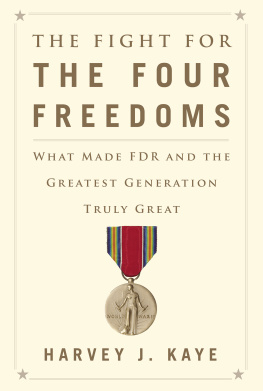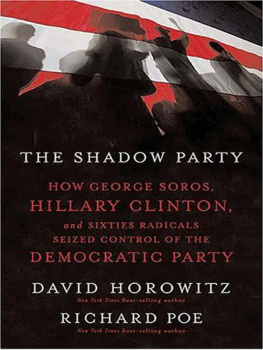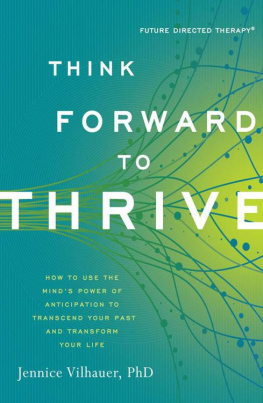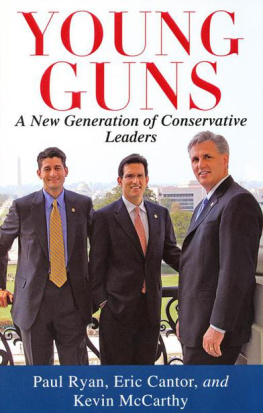A LSO BY H ARVEY J. K AYE
Thomas Paine and the Promise of America
Thomas Paine: Firebrand of the Revolution
Are We Good Citizens?
Why Do Ruling Classes Fear History? and Other Questions
The Powers of the Past
The Education of Desire
The British Marxist Historians
We hope you enjoyed reading this Simon & Schuster eBook.
Join our mailing list and get updates on new releases, deals, bonus content and other great books from Simon & Schuster.
C LICK H ERE T O S IGN U P
or visit us online to sign up at
eBookNews.SimonandSchuster.com
Thank you for downloading this Simon & Schuster eBook.
Join our mailing list and get updates on new releases, deals, bonus content and other great books from Simon & Schuster.
C LICK H ERE T O S IGN U P
or visit us online to sign up at
eBookNews.SimonandSchuster.com

HARVEY J. KAYE is the Ben & Joyce Rosenberg Professor of Democracy and Justice Studies at the University of WisconsinGreen Bay; an awardwinning author of numerous books, including Thomas Paine and the Promise of America; a frequent contributor to The Huffington Post and The Daily Beast; and a repeat guest on radio and television programs such as To the Best of Our Knowledge, the Thom Hartmann show, and Bill Moyers Journal .
MEET THE AUTHORS, WATCH VIDEOS AND MORE AT
SimonandSchuster.com
authors.simonandschuster.com/Harvey-J-Kaye

Simon & Schuster
1230 Avenue of the Americas
New York, NY 10020
www.SimonandSchuster.com
Copyright 2014 by Harvey J. Kaye
All rights reserved, including the right to reproduce this book or portions thereof in any form whatsoever. For information address Simon & Schuster Subsidiary Rights Department, 1230 Avenue of the Americas, New York, NY 10020.
First Simon & Schuster hardcover edition April 2014
SIMON & SCHUSTER and colophon are registered trademarks of Simon & Schuster, Inc.
The Simon & Schuster Speakers Bureau can bring authors to your live event. For more information or to book an event, contact the Simon & Schuster Speakers Bureau at 1-866-248-3049 or visit our website at www.simonspeakers.com.
Designed by Paul Dippolito
Jacket design by David Teravanesyan
Author photograph by Sean Sime
Library of Congress Cataloging-in-Publication Data
Kaye, Harvey J.
The fight for the four freedoms : what made FDR and the greatest generation truly great / Harvey J. Kaye. First Simon & Schuster hardcover edition.
pages cm
1. Roosevelt, Franklin D. (Franklin Delano), 18821945Influence. 2. United StatesHistory19331945. 3. United StatesSocial conditions20th century. 4. Civil rightsUnited StatesHistory20th century. 5. National characteristics, AmericanHistory20th century. 6. United StatesPolitics and government19331945. I. Title.
E806.K39 2014
973.917092dc23
2013012406
ISBN 978-1-4516-9143-6
ISBN 978-1-4516-9145-0 (ebook)
In honor of those who fought for the Four Freedoms
Norman Lear, Harold Sehres, George Kiyoshi Baba, Dan Bauman, Thomas Hildebrand, Jerry Goldberg, Earl Jahnke, Len Gumley, Samuel Lorimer Stewart, Harry Stimmel, Otto Scherz, James H. F. Sythoff, Roger Daniels, Norman Miller, Harry Alfred LeBien, Allan Paschen, Kenneth L. Hill, Leo Paul Wright, Herman Schiappi, Benjamin E. Austin, Anthony Simo, Lester Shelton, and especially Murray N. Kaye
Contents
I NTRODUCTION
W e need to remember. We need to remember what conservatives have never wanted us to remember and what liberals have all too often forgotten.
Now, after more than thirty years of subordinating the public good to corporate priorities and private greed, of subjecting ourselves to widening inequality and intensifying insecurities, and of denying our own democratic impulses and yearnings, we need to remember.
We need to remember who we are.
We need to remember that we are the children and grandchildren of the men and women who rescued the United States from economic destruction in the Great Depression and defended it against fascism and imperialism in the Second World War.
We need to remember that we are the children and grandchildren of the men and women who not only saved the nation from economic ruin and political oblivion, but also turned it into the strongest and most prosperous country on earth.
And most of all we need to remember that we are the children and grandchildren of the men and women who accomplished all of thatin the face of powerful conservative, reactionary, and corporate opposition, and despite their own faults and failingsby making America freer, more equal, and more democratic than ever before.
Now, when all that they fought for is under siege and we, too, find ourselves confronting crises and forces that threaten the nation and all that it stands for, we need to remember that we are the children and grandchildren of the most progressive generation in American history. We are the children of the men and women who articulated, fought for, and endowed us with the promise of the Four Freedoms.
On the afternoon of January 6, 1941, President Franklin Delano Roosevelt went up to Capitol Hill to deliver his Annual Message to Congress. Just weeks earlier, he had defeated the Republican Wendell Willkie at the polls and won reelection to an unprecedented third term. But Roosevelt now faced a far bigger challenge, one even more daunting than those he confronted in his first and second terms. Still stalked by the Great Depression, the United States was also increasingly threatened by the Axis powersNazi Germany, Fascist Italy, Imperial Japan. And with war already raging east and west, Americans had yet to agree about how to respond to the danger. The President, however, did not falter. He not only proceeded to propose measures to address the emergency. He also gave dramatic new meaning to All men are created equal... Life, liberty, and the pursuit of happiness... We the People of the United States... A new birth of freedom... and Government of the people, by the people, for the people...
FDR knew about crises. But he knew as well what Americans could accomplish, even in the darkest of times. Born in 1882, he had grown up privileged, the son of New York Hudson River gentry. Yet long before becoming President, he had suffered serious defeats and setbacks, none more devastating than contracting polio in 1921 at the age of thirty-nine. The disease had left him permanently unable to stand up or walk without assistance. However, supported by his wife, Eleanor, and other family members and friends, he had risen above the paralysis to become the most dynamic political figure in the United States. Moreover, his experiences and encounters in the course of doing so had reaffirmed and deepened his already powerful faith and confidence in God, in himself, and in his fellow citizensall of which had enabled him, in the face of the worst economic and social catastrophes in the nations history, to defiantly state that the only thing we have to fear is fear itself and to go on to proclaim, This generation of Americans
Together, President and people severely tested each other, made mistakes and regrettable compromises, and suffered defeats and disappointments. Nevertheless, challenging each other to live up to their finest ideals, Roosevelt and his fellow citizens advanced them further than either had expected or even imagined possible. Confronting fierce conservative, reactionary, and corporate opposition, they not only rejected authoritarianism, but also redeemed the nations historic purpose and promise by initiating revolutionary changes in American government and public life and radically extending American freedom, equality, and democracy. They subjected big business to public account and regulation, empowered the federal government to address the needs of working people, mobilized and organized labor unions, fought for their rights, broadened and leveled the We in We the People, established a social security system, expanded the nations public infrastructure, improved the environment, cultivated the arts and refashioned popular culture, andwhile much remained to be doneimbued themselves with fresh democratic convictions, hopes, and aspirations.
Next page








